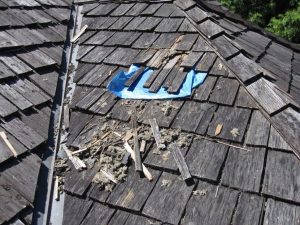As any Roofing repair contractor in Dublin or otherwise would tell you, there is a lot of roofing maintenance when it comes to your home. While you can simply put back maintenance, each time you delay it, you can add on new problems to it. Solving a problem with your roof as early as possible is an excellent way to preserve the roof’s integrity. Some repairs you can handle yourself, while others require professionals to be called in to handle it.
Identify the Issue – Track and Solve Roof Leaks
The first step in solving any obstacle is to understand what it is. In this case, finding out where your roof is leaking is also vitally important. Unless you intend to replace the entire roof, which can be very costly and very labor intensive, finding the exact leak is very important. This means you will have to go up on the roof and look around.
The two main things to look for with a roof leak are apparent cracks and weak spots. A soft spot means that water has ended up there, and it can be a good clue as to where the water entered. Sometimes water will flow into a breach in your roof and then flow downward, causing damage below itself. Once you have found a weak spot, you can usually find the leak’s location that much sooner. Check out our full range of roof repair services as we cover everything from minor work to consultation and much more.
Fixing Broken Tiles
Broken tiles can be snapped or chipped in pieces, hanging off of your roof or blown off altogether. In some cases, such as when the tiles are in sections, it may be time to replace the broken ones. In cases where there is a crack or chip at the top where the nail had been before, and the tile itself is still intact, simply putting in a new nail at roughly the same vertical level. If it’s placed precisely underneath the above shingle, this can solve the problem fairly quickly cracked tile roofing repair.
Always remember to have a peek under the actual tile before you repair or replace a tile, as you are able to see the decking underneath. If it is too weak, replacing a part of the decking may be required. For the most part, if you catch the tile problem early, the decking should still be strong enough that it can easily air-dry underneath once the shingles are restored to water tightness.

Lead Flashing
Lead flashing surrounds virtually any potential joining point on your roof. This is a point that can fail reasonably quickly, and you may be able to replace it yourself. Flashing is also good because it is easy to find. Flashing usually is built with lead flashing, tar backed aluminum foil or sheet metal. Generally, flashing can be bent into place and secured either via nails or adhesion.
When you flash an area, often you will have to remove tiles to get in there. This can be very labor intensive, and thus you may want to trust this to a professional. One of the most critical parts of handling a roof leak is determining what you are individually capable of, and what issue should be left to the professionals.